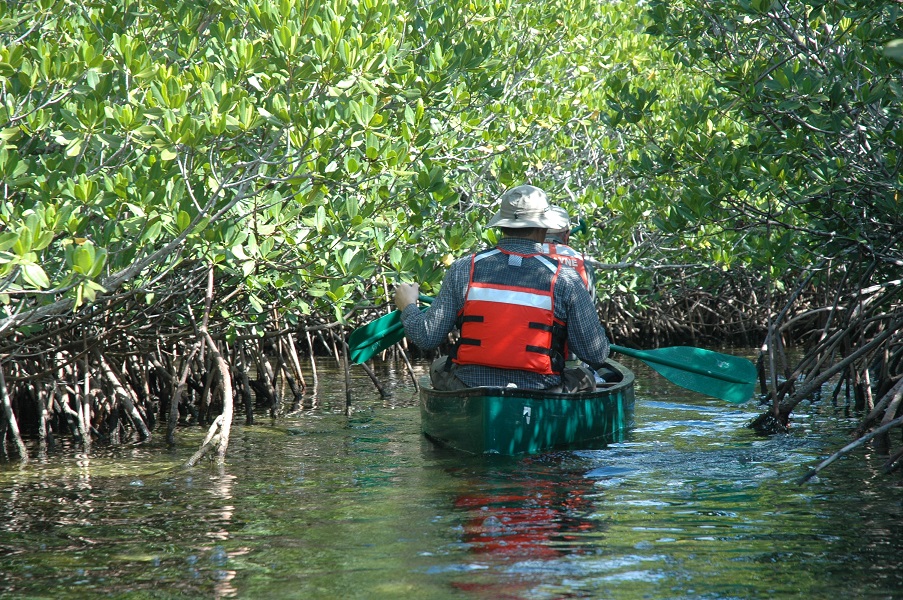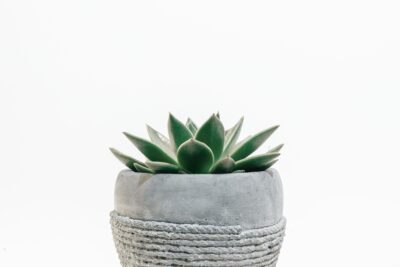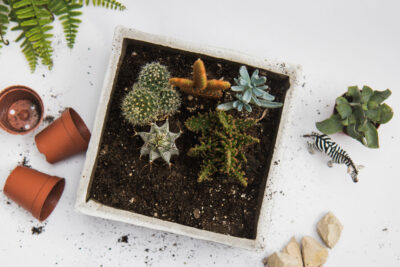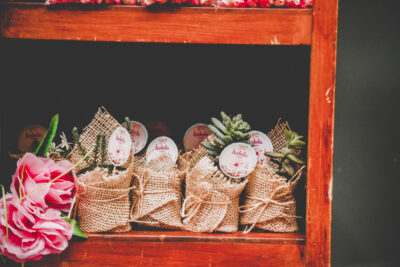
Can Succulents Thrive Outdoors in Any Climate and Season?

Succulents have become increasingly popular in recent years due to their unique and beautiful appearance, as well as their reputation for being low-maintenance plants. These plants, which store water in their leaves, stems, and roots, have adapted to survive in arid and dry environments. However, many people wonder if succulents can thrive outdoors in any climate and season, or if they are better suited for indoor cultivation.
We will explore the versatility of succulents and their ability to thrive in different climates and seasons. We will discuss the factors that influence the success of outdoor succulent growth, such as temperature, sunlight, and water requirements. Additionally, we will provide tips and guidelines for caring for succulents in various environments, including hot and dry climates, as well as colder and more humid regions. Whether you're a seasoned succulent enthusiast or a beginner looking to incorporate these plants into your outdoor garden, this article will provide valuable information to help you successfully grow and maintain succulents in any climate and season.
- Yes, succulents can thrive outdoors in any climate and season
- Succulents are highly adaptable and can survive in a variety of conditions
- In warmer climates, succulents can be planted directly in the ground
- In colder climates, succulents can be grown in containers and brought indoors during winter
- Succulents can withstand extreme temperatures, both hot and cold
- Succulents are drought-tolerant and can survive with minimal water
- Succulents can be protected from frost by covering them or moving them to a sheltered area
- Providing proper drainage is essential for outdoor succulent success
- Succulents can be grown in various types of soil, including sandy or rocky soil
- Regular sunlight exposure is crucial for the growth and health of outdoor succulents
- Frequently Asked Questions
Yes, succulents can thrive outdoors in any climate and season
One of the most amazing qualities of succulents is their ability to adapt and thrive in various climates and seasons. Whether you live in a hot, arid desert or a cold, snowy region, succulents can thrive outdoors and add beauty to your garden or landscape.
Drought-tolerant nature: Succulents are known for their ability to store water in their leaves, stems, and roots. This adaptation allows them to survive in dry and arid conditions, making them perfect for outdoor gardens in hot climates. In fact, succulents are often the go-to plants for xeriscaping, a landscaping technique that emphasizes water conservation.
Cold-hardy species: While some succulents are more sensitive to cold temperatures, many species are surprisingly cold-hardy. These hardy succulents have adapted to survive freezing temperatures and can even thrive in snowy conditions. Popular cold-hardy succulents include Sempervivum, Sedum, and Agave. By choosing the right species, you can enjoy succulents in your outdoor garden year-round, regardless of the climate.
Protective measures: Although succulents are naturally resilient, providing some extra protection during extreme weather conditions can help them thrive even more. For example, in hot climates, providing some shade during the hottest part of the day can prevent scorching. In colder regions, using frost blankets or bringing potted succulents indoors during frosty nights can protect them from freezing temperatures.
 Unraveling the Secrets of Succulents: Thriving in Diverse Environments
Unraveling the Secrets of Succulents: Thriving in Diverse EnvironmentsBest practices for growing succulents outdoors:
- Well-draining soil: Succulents prefer soil that drains well and doesn't hold excess moisture. Use a sandy or gritty soil mix specifically formulated for succulents to ensure proper drainage.
- Adequate sunlight: Most succulents thrive in bright sunlight, so make sure to place them in a spot with at least 6 hours of direct sunlight per day. However, some succulents can tolerate partial shade, so it's important to research the sunlight requirements of each species.
- Watering wisely: While succulents are drought-tolerant, they still need some water to thrive. Water your outdoor succulents deeply but infrequently, allowing the soil to dry out completely between waterings. Avoid overwatering, as this can lead to root rot and other issues.
- Regular maintenance: Keep an eye out for pests and diseases that can affect succulents. Remove any dead or damaged leaves and provide occasional fertilization to promote healthy growth.
By following these best practices and choosing the right succulent species for your climate, you can enjoy a thriving outdoor succulent garden that adds beauty and interest to your outdoor space, regardless of the climate and season.
Succulents are highly adaptable and can survive in a variety of conditions
When it comes to choosing the perfect plants for your outdoor garden, succulents are an excellent choice. These hardy plants are known for their ability to thrive in a variety of conditions, making them suitable for nearly any climate and season.
One of the reasons why succulents are so adaptable is their ability to store water in their leaves, stems, and roots. This allows them to withstand long periods of drought and survive in arid environments. In fact, succulents are native to regions with hot, dry climates such as deserts and arid regions.
However, don't be fooled into thinking that succulents can only survive in dry conditions. While they can tolerate drought, many succulent species can also thrive in more temperate climates with regular rainfall. Their ability to store water allows them to survive during periods of heavy rain and then use that stored moisture during drier times.
Furthermore, succulents are also equipped to handle extreme temperatures, both hot and cold. Some species can withstand scorching summer heat, while others can tolerate freezing temperatures in winter. Their adaptability to temperature fluctuations makes them ideal for outdoor gardens in regions with varying climates and seasons.
The importance of sunlight for succulents
In addition to their ability to withstand different climates, succulents also have specific sunlight requirements. Most succulents thrive in full sunlight, which means they need at least six hours of direct sunlight each day. However, some species can tolerate partial shade or indirect sunlight.
 The Ultimate Guide: Maximum Size of Indoor and Outdoor Succulents
The Ultimate Guide: Maximum Size of Indoor and Outdoor SucculentsWhen planting succulents in your outdoor garden, it's essential to consider their sunlight needs. Placing them in an area with insufficient sunlight can cause them to become leggy, stretched out, and lose their vibrant colors. On the other hand, exposing them to too much direct sunlight can result in sunburn and damage to their leaves.
Caring for outdoor succulents in different seasons
Succulents require different care depending on the season. In warmer seasons, such as spring and summer, succulents experience their active growth period. During this time, they may require more frequent watering and fertilizing to support their growth.
In contrast, during colder seasons like fall and winter, succulents enter a period of dormancy. Their growth slows down, and they need less water and fertilizer. It's important to adjust your care routine accordingly to prevent overwatering or overfeeding your succulents during these dormant periods.
- Spring: Increase watering frequency and provide balanced fertilizer to support growth.
- Summer: Monitor watering needs closely, as succulents may need more frequent watering due to heat.
- Fall: Reduce watering and stop fertilizing as succulents prepare for dormancy.
- Winter: Water sparingly, only when the soil is completely dry, and avoid fertilizing.
By understanding the specific needs of succulents in different seasons, you can ensure that your outdoor succulent garden stays healthy and thrives all year round, regardless of the climate.
Succulents are incredibly adaptable plants that can thrive outdoors in a wide range of climates and seasons. Their ability to store water, withstand extreme temperatures, and their specific sunlight requirements make them an excellent choice for any outdoor garden. By providing the right care and adjusting your routine based on the season, you can enjoy a stunning and resilient succulent garden no matter where you live.
In warmer climates, succulents can be planted directly in the ground
When it comes to warmer climates, succulents have the advantage of being able to thrive outdoors all year round. These resilient plants can be planted directly in the ground, making them a perfect addition to any garden or landscape.
 Are my succulents stretching under my grow light? How to prevent it
Are my succulents stretching under my grow light? How to prevent itSucculents are known for their ability to store water in their leaves, stems, and roots, which allows them to withstand long periods of drought. In warmer climates, where rainfall can be less frequent, succulents are able to survive and even thrive without much additional watering.
One of the key benefits of planting succulents directly in the ground is that they have access to a larger root system, which helps them absorb more water and nutrients from the soil. This allows them to grow larger and healthier, creating a stunning display in any outdoor space.
In addition to their resilience to drought, succulents are also well-suited to warmer climates due to their ability to tolerate high temperatures. While other plants may wilt or suffer damage from excessive heat, succulents can withstand the intense sun and still maintain their vibrant colors and unique shapes.
When planting succulents in warmer climates, it's important to choose a well-draining soil mix to prevent water from pooling around the roots. This helps prevent root rot and ensures that the plants receive adequate airflow to their roots.
Overall, succulents are a great choice for outdoor planting in warmer climates. Their ability to store water, tolerate high temperatures, and thrive in well-draining soil make them a low-maintenance and visually appealing addition to any garden or landscape.
In colder climates, succulents can be grown in containers and brought indoors during winter
In colder climates, it can be challenging for succulents to thrive outdoors year-round due to the harsh winter conditions. However, with proper care and attention, they can still be grown successfully in containers and brought indoors during the colder months.
When choosing succulents for outdoor cultivation in colder climates, it's essential to select varieties that are more cold-tolerant. Hardy succulents such as Sempervivum, Sedum, and Agave can withstand lower temperatures and are better equipped to survive the winter months.
 How Resilient Are Succulents to Temperature Fluctuations?
How Resilient Are Succulents to Temperature Fluctuations?Before the arrival of frost, it is advisable to gradually acclimate the succulents to indoor conditions. This can be done by gradually reducing their exposure to sunlight and bringing them indoors during the night. By taking this precaution, the succulents will be better prepared for the transition to an indoor environment.
Once indoors, it is crucial to provide the succulents with adequate light. Placing them near a south-facing window or using grow lights can help compensate for the reduced sunlight during winter. Additionally, maintaining a temperature range of around 60-70°F (15-21°C) will ensure the succulents remain comfortable and continue to grow.
While indoors, it's important to adjust the watering routine as well. Succulents generally require less frequent watering during winter due to slower growth and reduced evaporation. It is advisable to allow the soil to dry out between waterings to prevent overwatering and root rot.
Furthermore, during their time indoors, it is crucial to monitor the succulents for signs of pests or diseases. The controlled indoor environment can sometimes lead to increased susceptibility to certain issues. Regularly inspect the plants for any signs of insects, mold, or fungal infections, and take appropriate measures to address any problems that arise.
As the weather begins to warm up and the threat of frost subsides, the succulents can be gradually reintroduced to the outdoors. Start by placing them in a shaded area for a few hours a day and gradually increase their exposure to sunlight over time. This process of acclimatization will help prevent sunburn and allow the plants to adjust to the outdoor conditions.
While succulents may face challenges in colder climates, they can still thrive outdoors with the right care. By choosing cold-tolerant varieties, acclimating them to indoor conditions during winter, providing proper lighting and temperature, adjusting watering routines, and monitoring for pests and diseases, succulents can successfully survive and thrive year-round, even in less favorable climates.
Succulents can withstand extreme temperatures, both hot and cold
Succulents are known for their ability to thrive in various climates and seasons. One of the most remarkable characteristics of succulents is their ability to withstand extreme temperatures, both hot and cold.
 The Science Behind Succulents Turning Red in Specific Conditions
The Science Behind Succulents Turning Red in Specific ConditionsHot climates: Succulents are well-adapted to desert-like conditions with scorching temperatures. Their thick, fleshy leaves and stems act as water reservoirs, allowing them to survive in arid environments. These plants have developed efficient mechanisms to reduce water loss through transpiration, such as closing their stomata during the hottest parts of the day. This adaptation helps them conserve water and withstand intense heat.
Cold climates: Despite their association with warm and dry environments, many succulent species are also equipped to endure cold temperatures. Some succulents, like Sempervivum and Sedum, are frost-tolerant and can survive freezing temperatures. These hardy succulents have specialized tissues that can withstand ice formation and protect them from frost damage.
It is important to note that while succulents can tolerate extreme temperatures, prolonged exposure to extreme conditions can still be detrimental to their health. It is crucial to provide them with the right care and protection to ensure their survival.
Factors that influence succulents' ability to thrive outdoors
Several factors contribute to succulents' ability to thrive outdoors, regardless of the climate and season:
- Sunlight: Succulents generally require ample sunlight to thrive. Most succulents prefer full sun exposure, but some can tolerate partial shade. When placing your succulents outdoors, ensure they receive the appropriate amount of sunlight based on their specific needs.
- Watering: While succulents are known for their ability to store water, it is crucial to strike a balance when it comes to watering. Overwatering can lead to root rot, while underwatering can cause dehydration. Monitor the soil moisture and water your succulents accordingly.
- Soil: Succulents thrive in well-draining soil that allows excess water to escape easily. Use a specialized succulent or cactus mix to ensure proper drainage and prevent waterlogging, which can lead to root issues.
- Temperature fluctuations: While succulents can tolerate extreme temperatures, rapid fluctuations can be stressful for them. Gradual acclimation to changing temperatures is beneficial for their overall health and survival.
- Protection from frost: If you live in an area with frosty winters, consider providing protection for your outdoor succulents. Use frost cloths or bring them indoors during freezing temperatures to shield them from potential damage.
By considering these factors and providing the necessary care, succulents can thrive outdoors in a wide range of climates and seasons. Whether you live in a hot and arid region or a cold and frosty one, these resilient plants can add beauty and charm to your outdoor spaces.
Succulents are drought-tolerant and can survive with minimal water
Succulents are known for their ability to thrive in arid conditions and can survive with minimal water. This makes them a perfect choice for outdoor gardening in various climates and seasons.
 Factors Affecting Succulent Size: Growth Potential & Limitations
Factors Affecting Succulent Size: Growth Potential & LimitationsUnlike other plants that require frequent watering, succulents have adapted to store water in their leaves, stems, and roots. This allows them to withstand long periods of drought without withering or dying. In fact, overwatering is one of the common mistakes that can harm succulents, as it can lead to root rot and other issues.
When planting succulents outdoors, it is important to choose the right location. Most succulents prefer full sun or partial shade, as they need plenty of sunlight to thrive. However, some varieties can tolerate shade or indirect light, making them versatile for different outdoor spaces.
Additionally, succulents are highly adaptable to different climates. While they are often associated with desert landscapes, there are succulent varieties that can withstand freezing temperatures and even snow. It is important to research the specific succulent species you are interested in to ensure it is suitable for your climate.
Choosing the right succulents for your outdoor garden
There is a wide variety of succulents available, each with its own unique characteristics and preferences. Some popular outdoor succulents include:
- Sedum: This versatile succulent comes in various shapes and colors, making it a popular choice for outdoor gardens.
- Aloe: Aloe vera is not only known for its healing properties but also for its ability to thrive in different climates.
- Agave: Agave plants are known for their striking architectural forms and can tolerate both extreme heat and cold.
- Echeveria: Echeverias are beautiful rosette-shaped succulents that come in a wide range of colors, perfect for adding visual interest to your outdoor garden.
When selecting succulents for your outdoor garden, consider factors such as your climate, the amount of sunlight your garden receives, and the overall aesthetic you want to achieve.
Proper care and maintenance are also essential for the survival and thriving of outdoor succulents. While they are low-maintenance plants, it is important to provide them with well-draining soil, avoid overwatering, and protect them from extreme weather conditions.
Succulents can be protected from frost by covering them or moving them to a sheltered area
 Succulents: Full Sun or Shade for Optimal Growth?
Succulents: Full Sun or Shade for Optimal Growth?Protection from Frost
Succulents are known for their ability to thrive in arid climates, but many people wonder if they can survive outdoors in regions with harsh winters or extreme temperature fluctuations. The good news is that with proper care and protection, succulents can indeed thrive in almost any climate and season.
One of the main challenges for succulents in colder climates is frost. Frost can damage the leaves and stems of succulents, leading to rot or even death. However, there are several ways to protect your succulents from frost:
- Covering: One of the simplest ways to protect your succulents from frost is by covering them. Use a frost cloth or an old bedsheet to create a protective barrier around your plants. Make sure the cover reaches all the way to the ground and secure it with stakes or rocks.
- Moving: If you have potted succulents, consider moving them to a sheltered area during the colder months. This could be a covered porch, a greenhouse, or even indoors near a sunny window. Just make sure the plants still receive enough light and airflow.
- Building a Cold Frame: Another option is to build a cold frame, which is a small, enclosed structure that provides protection from the elements. Cold frames can be made from various materials such as wood or plexiglass and can be easily customized to fit your succulents' needs.
Remember to monitor the weather conditions and adjust your protection methods accordingly. It's also important to note that while succulents can tolerate colder temperatures, they still need some dormant period during winter, so be cautious with excessive heat provided by artificial sources.
By taking these precautions, you can ensure that your outdoor succulents survive and thrive even in the harshest climates and seasons.
Providing proper drainage is essential for outdoor succulent success
When it comes to growing succulents outdoors, one of the most important factors to consider is proper drainage. Succulents, known for their ability to store water in their leaves and stems, are highly susceptible to root rot if their roots are constantly saturated in water. Therefore, it is crucial to ensure that the soil and container used for outdoor succulents allow excess water to drain freely.
To achieve proper drainage, you can start by selecting a well-draining soil mix specifically formulated for succulents. These mixes usually contain a combination of coarse sand, perlite, and peat moss, which promote water drainage and prevent the soil from becoming compacted. Avoid using regular garden soil, as it tends to retain moisture and can lead to root rot.
 Succulents: Perennials or One-Season Wonders? Unveiling their Lifespan
Succulents: Perennials or One-Season Wonders? Unveiling their LifespanAdditionally, choosing the right container for your outdoor succulents is equally important. Opt for containers with drainage holes at the bottom to allow excess water to escape. This will help prevent water from pooling around the roots and causing damage. If you already have a container without drainage holes that you'd like to use, you can add a layer of small rocks or pebbles at the bottom to create a makeshift drainage system.
When it comes to watering outdoor succulents, it's essential to strike a balance. While succulents are drought-tolerant plants, they still require regular watering, especially during hot and dry seasons. However, it's crucial to avoid overwatering, as this can lead to root rot. A good rule of thumb is to water deeply, allowing the water to soak into the soil and reach the roots, and then allow the soil to dry out completely before watering again.
Lastly, providing sufficient sunlight is key to ensuring the health and vitality of outdoor succulents. Most succulents thrive in bright, indirect sunlight, although some varieties can tolerate more shade or direct sunlight. It's important to research the specific light requirements of the succulents you have and place them accordingly in your outdoor space.
To help your outdoor succulents thrive in any climate and season, make sure to provide proper drainage, use a well-draining soil mix, choose containers with drainage holes, water deeply but infrequently, and provide adequate sunlight. By following these guidelines, you can enjoy the beauty of succulents in your outdoor space year-round.
Succulents can be grown in various types of soil, including sandy or rocky soil
Can Succulents Thrive Outdoors in Any Climate and Season?
One of the remarkable qualities of succulents is their ability to adapt and thrive in different environments. Whether you live in a hot and arid desert or a colder, more temperate region, succulents can be grown outdoors in almost any climate and season.
Succulents are known for their ability to store water in their leaves, stems, and roots, making them highly resilient to drought conditions. This unique adaptation allows them to survive in environments with limited rainfall and high temperatures, such as deserts. However, it doesn't mean that succulents can only thrive in hot and dry climates.
 Can Succulents Survive Prolonged Exposure to Direct Sunlight?
Can Succulents Survive Prolonged Exposure to Direct Sunlight?While succulents naturally prefer warmer and sunnier conditions, many species can withstand a wide range of temperatures. Some varieties, like Sedums and Sempervivums, are cold-hardy and can survive freezing temperatures and frost. These hardy succulents go dormant during the colder months, conserving energy and water until the warmer weather returns.
When it comes to soil, succulents are incredibly versatile. They can grow in various types of soil, including sandy or rocky soil, as long as it provides adequate drainage. Succulents dislike sitting in waterlogged soil, which can lead to root rot. Therefore, it's crucial to ensure that the soil drains well to prevent water accumulation.
If you live in an area with heavy clay soil or poor drainage, you can amend it by adding perlite, coarse sand, or pumice to improve its drainage capabilities. This will create an environment that closely resembles the native habitats of succulents, allowing their roots to access the moisture they need while avoiding excessive saturation.
Another factor to consider when growing succulents outdoors is sunlight exposure. Most succulents thrive in full sun, meaning they require at least six hours of direct sunlight per day. However, some species can tolerate partial shade, especially in regions with intense afternoon sun or during the peak of summer.
When planting succulents in your garden or outdoor containers, it's essential to provide them with adequate spacing to allow air circulation and prevent overcrowding. This helps minimize the risk of fungal diseases and promotes healthier growth.
Succulents can indeed thrive outdoors in various climates and seasons. Their water-storing abilities, adaptability to different temperatures, and tolerance for different soil types make them suitable for a wide range of environments. By understanding their specific requirements and providing the right growing conditions, you can enjoy the beauty and resilience of these fascinating plants, no matter where you live.
Regular sunlight exposure is crucial for the growth and health of outdoor succulents
When it comes to the growth and survival of outdoor succulents, regular sunlight exposure is absolutely crucial. Succulents are known for their ability to thrive in arid and dry conditions, which makes them well-suited for outdoor environments. However, the amount of sunlight they receive can greatly affect their growth and overall health.
 Succulent Size Exploration: Unveiling Their Maximum Growth Potential
Succulent Size Exploration: Unveiling Their Maximum Growth PotentialSucculents are sun-loving plants that require several hours of direct sunlight each day to thrive. This is because sunlight provides them with the energy they need to carry out photosynthesis, a process that allows them to convert light into energy and produce food. Without adequate sunlight, succulents may become weak, leggy, or even die.
When positioning your outdoor succulents, it is important to consider the direction and intensity of sunlight in your specific climate and season. In general, succulents thrive in full sun or bright, indirect light. However, some species may tolerate partial shade or filtered light.
Factors to Consider for Outdoor Succulents' Sunlight Exposure
- Climate: Succulents have different sunlight requirements based on the climate they are in. In hot and dry climates, succulents can handle more direct sunlight. On the other hand, in cooler climates or during the winter season, succulents may benefit from some protection against harsh sunlight or frost.
- Season: The amount of sunlight that succulents receive can vary depending on the season. During the summer months, when the days are longer and the sun is stronger, succulents may require more sunlight exposure. In contrast, during the winter months, when the days are shorter and the sun is weaker, succulents may need less sunlight.
- Location: The location of your outdoor succulents can also impact their sunlight exposure. Consider factors such as the orientation of your garden or balcony, nearby buildings or trees that may cast shadows, and the presence of reflective surfaces that can intensify sunlight.
It is important to find the right balance when it comes to providing your outdoor succulents with sunlight. While they need a good amount of sunlight to thrive, excessive exposure to intense sunlight can lead to sunburn or heat stress. Observing your succulents closely and monitoring their response to sunlight will help you determine the ideal amount and duration of sunlight they need.
Remember to also consider other factors that contribute to the overall health of your outdoor succulents, such as proper watering, well-draining soil, and adequate airflow. By providing them with the right conditions, your succulents can thrive outdoors regardless of the climate or season.
Frequently Asked Questions
Can Succulents Thrive Outdoors in Any Climate and Season?
No, succulents have different climate preferences. While some can thrive in various climates, most prefer warm and dry conditions. It's important to choose the right succulent species for your specific climate.
Do Succulents Need Direct Sunlight to Grow?
Most succulents thrive in bright and indirect sunlight. While they can tolerate some direct sunlight, prolonged exposure can cause sunburn and damage to the plants.
How Often Should I Water My Succulents?
Succulents have low water needs and are prone to root rot if overwatered. It's best to water them sparingly, allowing the soil to dry out between waterings. The frequency of watering depends on the specific succulent species and the climate it's in.
Can Succulents Survive Winter Frost?
Not all succulents are frost-tolerant. Some succulents can survive light frost, while others may not withstand freezing temperatures. It's important to know the cold hardiness of your succulents and provide protection or bring them indoors during winter if needed.
If you want to read more articles similar to Can Succulents Thrive Outdoors in Any Climate and Season?, you can visit the Growing Conditions category.






You Must Read